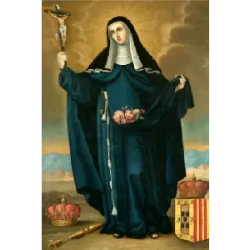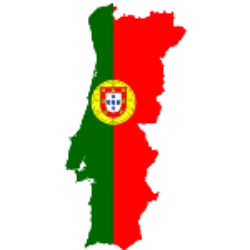Chestnut Tradition

Magusto is a festival between October and November, associated with dates such as Saint Simon's Day, All Saints' Day and Saint Martin's Day. It is celebrated around bonfires, roasting chestnuts with jeropiga, açaí or new wine. The brave jump over the bonfire, and "filling" it with ashes is part of the tradition. Despite the rain in autumn, "Saint Martin's summer" brings sunshine. The legend of Saint Martin, related to a rainy day, explains this phenomenon. A specific tradition, the "Magusto da Velha", takes place in Aldeia de Viçosa on December 26, honoring a rich old woman with the throwing of chestnuts from the bell tower and prayers. The event in Barqueiros, Mesão Frio, connects magusto to ancient rituals in honor of the dead.
A Monastic Secret that Enchanted the World

The history of Pastel de Belém dates back to the beginning of the 19th century and is linked to the monks of the Jerônimos Monastery, in Belém, Lisbon. They would have created the sweet to use surplus gems from the hosts. The monks kept the secret of the recipe, but after liberal revolutions in 1920, they had to leave the monastery. A sugar merchant, Domingos Rafael Alves, discovered the secret and began selling the sweets as "Pastéis de Belém". The region attracted tourists, strengthening the sweet's fame. In the 20th century, Pastel de Belém became a tourist and gastronomic icon in Portugal, with visitors from all over the world trying this delicacy. The local proverb says: "a bride who eats pastry never takes off her ring", and it is common to see newlywed couples enjoying this sweet treat on their wedding day as part of the tradition.
Test yourself with one of these challenges 👇
Discover some interesting facts about Portugal
Saint Elizabeth of Portugal 's Day is celebrated on July 4th

Saint Elizabeth of Portugal 's Day is celebrated on July 4th . Saint Elizabeth, also known as Elizabeth of Aragon, was a queen known for her charity and generosity towards those less fortunate. She was born in 1271 and died in 1336. Saint Elizabeth is remembered for her charitable works, including creating hospitals and distributing food to the poor. She is also known for her deep commitment to the Christian faith and her prayer life. Her devotion to helping those in need made her a revered and respected figure in Portugal and beyond.
celebrate in July 4
April 25 is the day of the Carnation Revolution

April 25 is the day of the Carnation Revolution, a historic event in Portugal that took place on April 25, 1974, which overthrew the dictatorial regime of the Estado Novo, in power since 1933. Led by the Armed Forces Movement (MFA), composed mainly of captains who had participated in the Colonial War, the movement had massive popular support. The military action resulted in few civilian casualties and led to the appointment of the Junta de Salvação Nacional to govern the country. A period of social and political unrest known as PREC (Ongoing Revolutionary Process) followed. On April 25, 1976, a new democratic Constitution came into force, marking the end of the authoritarian regime and the beginning of a democratic period in Portugal. The military coup was triggered by dissatisfaction with the colonial war, internal divisions within the regime and political repression.
celebrate in April 25
The Portuguese colonization of Brazil from 1530 onwards

The Portuguese colonization of Brazil from 1530 onwards brought a diversity of foods and spices, a result of relations between Portugal and India. With the court moving to São Vicente (today São Paulo), foods such as rice, coriander, mint, oranges and spices were introduced. Livestock activity began with the introduction of various animals. Rice cultivation resulted in dishes based on this ingredient, and the use of spices such as salt, rosemary, cinnamon and cloves became common. Notable influences on Portuguese cuisine include Brazilian feijoada and desserts such as marmalade, orangeade, rice pudding and sponge cake.
National Castle Day is celebrated on October 7th

National Castle Day is celebrated on October 7th in Portugal . This date was created to promote the appreciation and preservation of the historical and cultural heritage represented by the country's castles. Castles, which date back to different periods in Portuguese history, are important architectural and tourist landmarks, as well as symbols of national identity. During this day, several activities are held in many castles, such as guided tours, historical reenactments, workshops and exhibitions, allowing the public to learn more about the history and importance of these monuments.
celebrate in October 7
In the city of Barcelos, Portugal, there was concern due to an unsolved crime

In the city of Barcelos, Portugal, there was concern due to an unsolved crime. A Galician suspect, who was passing through on a pilgrimage to Santiago de Compostela, was arrested and sentenced to death on the gallows. He swore his innocence and asked to be taken to the judge who sentenced him. The desperate Galician said that his innocence was as certain as the rooster on the judge's table would crow when he was hanged. Everyone laughed at the statement, but no one touched the rooster. Surprisingly, when the Galician was about to be hanged, the rooster on the table crowed. The judge rushed to the gallows and discovered that the Galician was alive due to a poorly tied knot in the rope. He was released, and the case was closed. Years later, the Galician returned to Barcelos and sculpted the Monument of Senhor do Galo in honor of the Virgin Mary and Santiago Maior. The Rooster of Barcelos has become a popular symbol, representing justice and innocence in Portugal.
Test yourself with one of these challenges 👇
HOME














